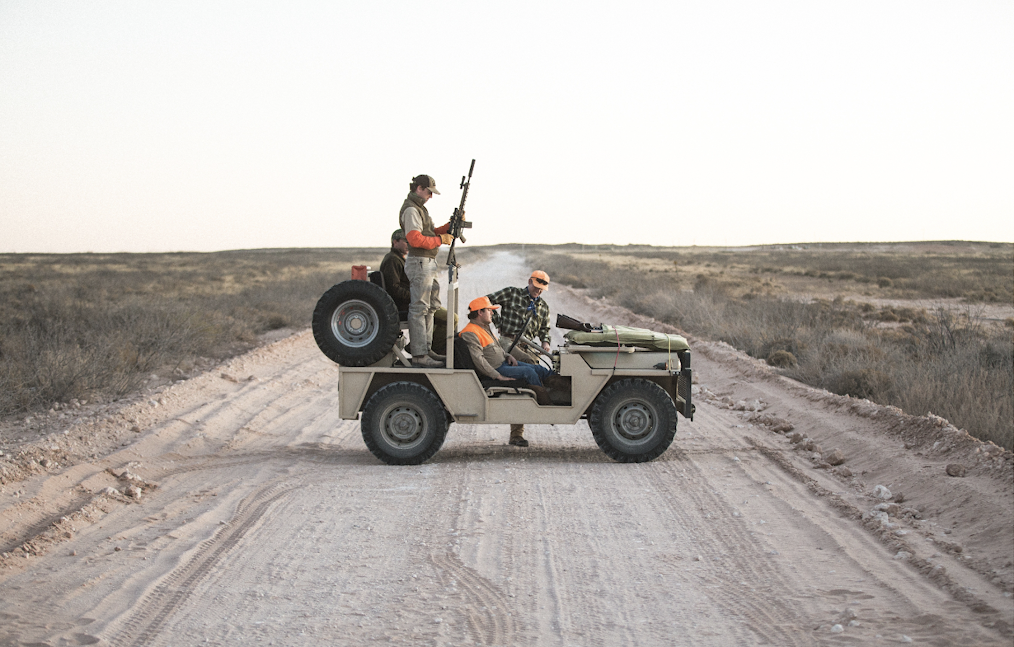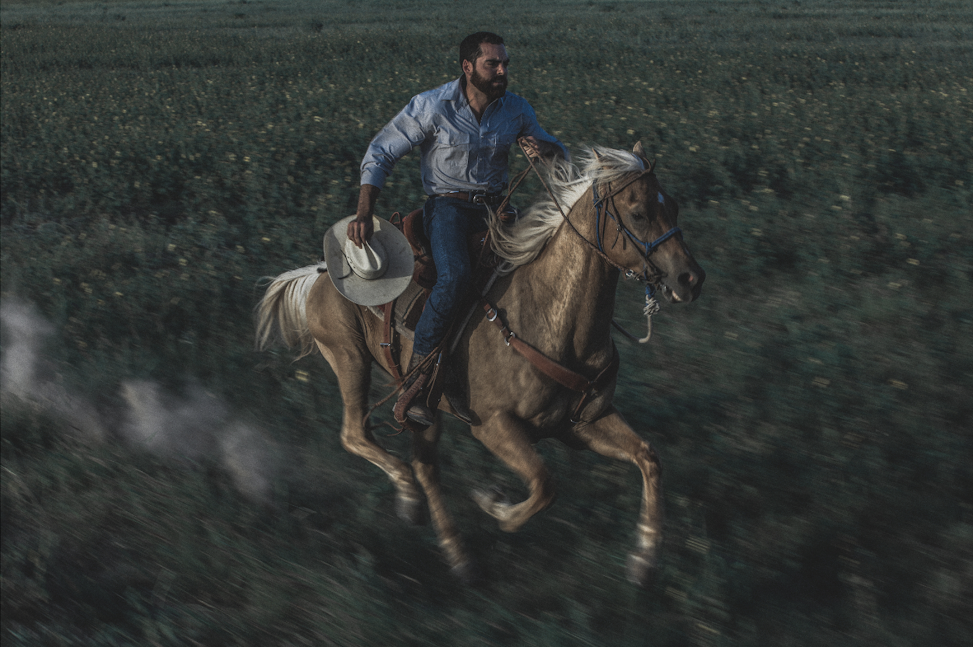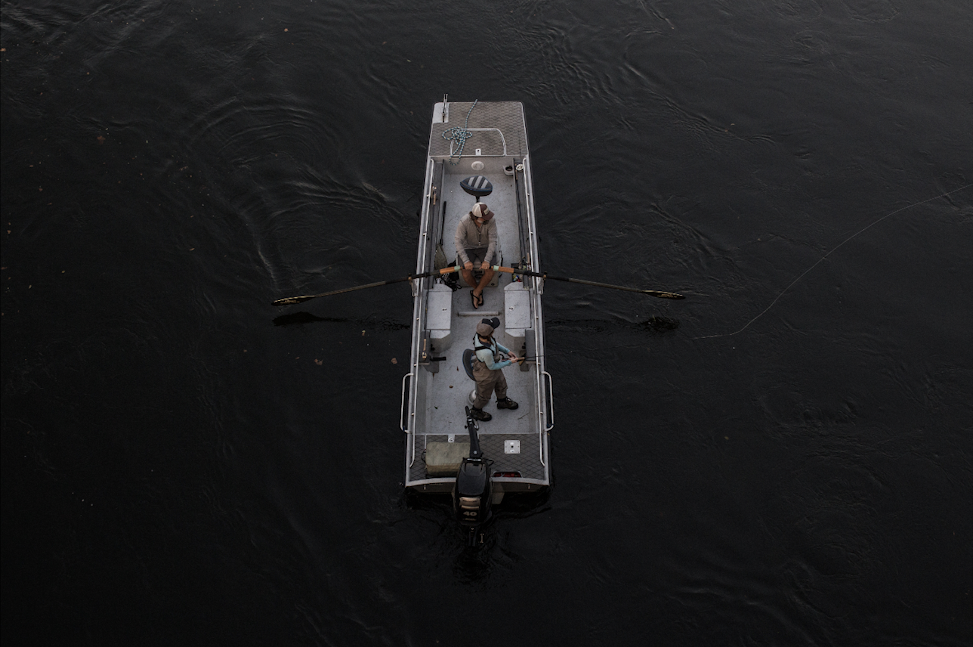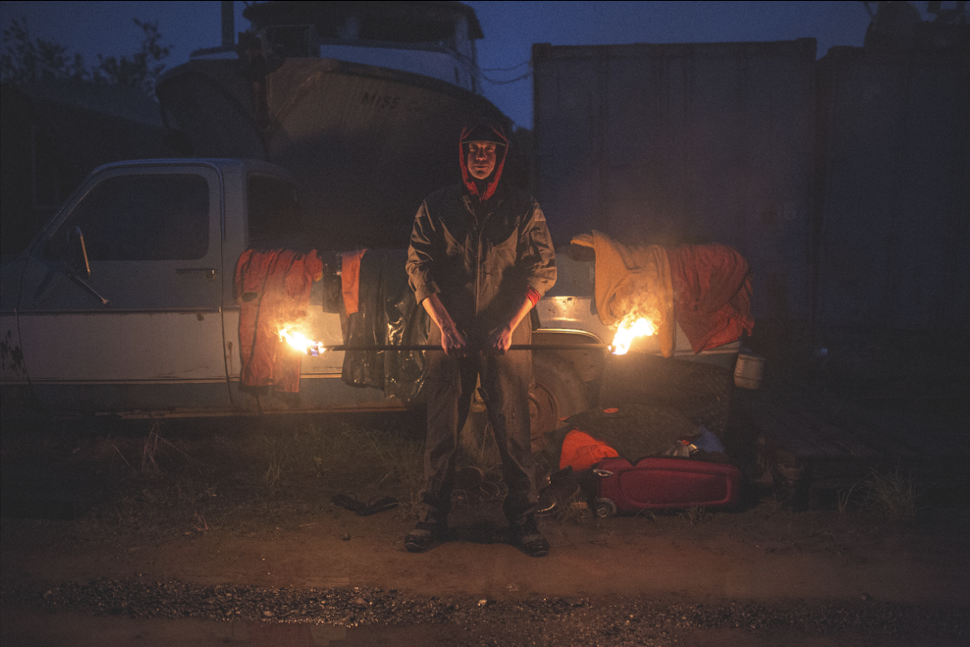On a perfect fall day in the Northern Highlands of Scotland, photographer Ford Yates lifts his camera to his eye. In front of him is an advertorial shoot for a new English wool clothing line. A cool November wind sweeps across the historical grounds and, in the background, a silhouetted castle looms.
In the back of Yates' mind is an endless consciousness stream of photography jargon: shooting at the right angle, finding the most precise harmony of exposure and aperture, thoughts of lenses and shutters and all of the other infinite technical details that he’s held onto through the years of his practice.
But at the forefront of his mind, where the scene in front of his lens takes the stage, Yates is not thinking about composure. He is focused on being a translator of emotion from the subject, through the camera, to the viewer.
“My end goal in what I shoot is that I would love to turn heads with my work almost in a confusing way," Yates said. “The ideal reaction to a photo of mine would be almost a state of confusion.”
That’s not to say that Yates is trying to make his viewers’ heads hurt; rather, he seeks a sort of attention-commanding confusion that melts into intrigue and, eventually, understanding, as the image he captured comes to life in the mind of the beholder.
Early days: Introduced to the craft
Yates is an advertising, editorial and outdoor photographer who has traveled the world corner-to-corner for his shoots and, while his advertising campaign shots can be more of a challenge to invoke those emotions in, his natural knack as a creative makes it possible.
The Dallas native wasn’t born with his finger on the shutter button, though. He didn’t pick up a camera until high school--his first piece of equipment was a hand-me-down from his mother, one of the earliest DSLR models ever made, back in the late 1990s.

Yates' brother, Jack, and friends coyote hunting in New Mexico. Photo by Ford Yates
A fierce lover of the outdoors, Yates frequently went on hunting, cycling and fishing trips in his high school and college years. On his luggage right next to his ammunition, his bicycle helmet and his tackle box was the second-hand DSLR.
“I grew up in a very outdoor environment,” Yates recalled. “So I just brought the camera along to what was already happening in my life.”
Once the camera started coming along, Yates began to notice things in a new way. He saw his beloved pastimes in a different light: a cluster of forgotten shotgun shells in the dirt, a camouflage-clad hunter gazing over a lake heavy with fog, a glorious crown of turkey feathers spotted between the trees.
“You go on a hunting trip and oftentimes, it’s very disorganized; there’s nothing that seems attractive about it so to speak,” Yates explained. “People value practicality over anything else, and so you have situations where nobody cares about what their setting looks like because they’re just valuing comfortability, practicality.
“I loved the idea of taking the chaotic hunting scene and simplifying it down to one very minimal excerpt of the bigger picture.”
He set out to capture the moments in these outdoor endeavors that often go forgotten and become lost in the enthrall of adrenaline and wonder that being outdoors can bring.
A leap of faith
Still just a hobbyist in the photography world, Yates went on to study business first at the University of Texas and then the University of Oklahoma. During his sophomore year of college, Yates decided to go out on a limb.
“I was sharing my photography with the people I was around at the time and they were pretty pleased,” Yates said. “So I thought, if I’m doing something I like and sharing it with people and it makes them happy, that’s a good thing and I should explore it further.”

A favorite of Yates's from a Luchesse campaign shot on the Mexico/Texas border. Photo by Ford Yates
Whether through brazen confidence, spritely naivete or perhaps a combination of both, Yates decided to send massive prints of his work—too big to be missed, as the photographer described them—along with resumes and cover letters to leading publications in the United Kingdom and the U.S.
Looking back, the world-renowned photographer laughed at how his shot in the dark worked.
“You can’t ignore 20-by-30 inch prints on your desk as a creative director at an agency,” he said. “I didn’t know anything about the business at the time, so that was what I came up with.”
Just a kid with a camera with no experience in even sending a photography invoice, Yates was in for a surprise—and the opportunity—of a lifetime when all of the publications, including Conde Nast, Patagonia, Filson and Outside Magazine, responded to tell Yates that he was in.
“It was not the response I was expecting at all,” Yates said.
While he spent the first shoots of his career as an unpaid tagalong shooter, he celebrated the chance to be alongside other creatives.
“I was so thrilled to be a part of stuff like that, and then I just leveraged those relationships and kept on talking to those folks, (creative) directors that I had made friends with.”
Yates moves upward
By the fall of 2015, Yates was on-set at a catalog shoot with Filson in Seattle, which snowballed into four or five more catalog shoots over the next three years, including one with Duluth Trading Co. Publishers were abuzz with talk of the new kid out of Texas who, meanwhile, had graduated from the University of Oklahoma in 2018 with a multidisciplinary business and economics degree.
“Nothing to do with photography,” Yates lamented with a chuckle. “But I think I always had a bit of an entrepreneurial mindset. I’m super thankful to have had professors who were willing to move exams around and be flexible when I was pretty heavily involved in the photo work.”
Yates quickly became a jet-setter, with his photography eye in demand for shoots in Hawaii, Colorado, the San Juan Islands and more. One of his favorite shoots was the November 2019 shoot in the Scottish Highlands for the Herne Clothing line, an English family-owned brand that prides itself on offering top-tier wool clothing sustainably made from their own sheep herd.

A grouse hunting guide during a wool clothing company campaign in the Northern Highlands of Scotland. Photo by Ford Yates
Learning about the business’ narrative and how they care for their products down to each thread and micron count is what brings Yates full-circle back to finding emotion even in an advertorial shoot: there’s more to capture than just clothing, wool or sheep. There’s heritage, dignity, history.
Yates will always remember not only the brand but also the backdrop. He shot at the 9,000-acre estate of an Italian Duke, a castle and grounds so esteemed that it was granted its own standing army.
“It was nothing I had ever heard of or seen before,” Yates said, “and I was so happy to be a part of it.”
The photographer has a couple of other favorite shoots that will stick with him. He got to shoot for Lucchese, the legendary bootmaker, at the border of Texas and Reynosa, Mexico, on a historical ranch where it was rumored that a large drug shipment had just been seized by the DEA—but that was just a rumor, Yates said.
Yates also got to capture a photographic series about a man in the San Juan Islands who made kayaks out of willow branches and caribou skin.
"That was fascinating for me to see because I didn't know that that was possible," Yates said. "He was an interesting subject to capture and very, very in tune with natural products and the sustainable approach to kayaking and maintaining the Innuit heritage that he came from."

Standing on a bridge, Yates captures an Arkansas fly guide featured in an upcoming Garden&Gun issue. Photo by Ford Yates
From chilly Scottish Highlands to the rumored site of a cartel seizure, Yates said these are shoots he will never forget. In fact, when asked what picture he would pick if he could only retain one piece of his work in the world, he chose a shot from that historic—and infamous?—ranch on the Tex-Mex border.
In the image, a man rides at dusk, the silver mane and tail of his horse billowing. The horse’s curled muzzle with teeth bared is a mirror of the concentration, the urgency, in the cowboy’s furrowed forehead. The horse’s legs and the surrounding prairie are smeared in motion. The photograph shows insistence, power and timelessness.
While the scene is a carefully crafted snippet of a boot advertorial, and the model was in truth just galloping his horse past Yates who stood atop a truck cab to get the shot, viewers are transported to a different time, a different place, a story that feels not our own.
“It is capturing simplicity in the realm of chaos,” Yates said of the photo. The horse was galloping quickly past him, and Yates took upward of 2,500 shots just for this one frame.
“That’s what I’m after, is to take a raw, authentic, real, active scene and boil it down to one shot that’s extremely clean, extremely minimal. An excerpt of what is going on," he said. “I love that photo because, for me, it captures minimalism and simplicity in that little sprint of theirs.”
If he even captures one photo that he's proud of from hundreds or thousands of shots taken, Yates said he’s leaving the shoot at the end of the day feeling accomplished.
“I don’t need a journalistic swatch of 300 photos for every trip I go on,” he said. “It takes one good excerpt to pull on people’s curiosity.”
The human behind the lens
Photographers can often get wrapped up in the technicalities of their craft--if their settings are just right, if they’ve got the latest and greatest in gear, if their editing skills are flawless. That’s why Yates thinks the biggest challenge for photographers everywhere is to put the technical obsession behind and just be there.
“They ignore the fact that what makes a photographer worth following is really just the scenes that they’re finding. Where they’re going, the narratives they tell. There’s every bit of a narrative aspect to photography as there is a technical and gear one,” Yates explained.

A foggy morning in East Texas. Photo by Ford Yates
Whether shooting with $15,000 worth of photography equipment, a first-generation DSLR from the ‘90s, a vintage film camera or an iPhone, in the grand scheme of things, Yates reminds himself and other photogs to step back and remember that even a perfect photo in terms of technical details that has no narrative or emotion is still not that great of a photo. If a photographer’s images are being rendered in billboard-sized prints, it’s not because they've got the best camera on the market; it’s because they’ve got the best photographic eye in the crowd.
“You would rather have a crappy photo of something that’s absolutely enthralling than you would have a perfect photo of something that no one cares about,” Yates said, noting that his two “old reliable” camera bodies are approaching 10 years old. “Some of the best advice I got early on was from a man named Reid Slaughter, who told me to just ‘shoot, shoot, shoot,’ and that was it. And that’s so much more important than the gear.”
Yates’ year outlook: More globetrotting and a rebranding
This photographer is looking at a busy rest of the year.
Yates is planning a rebranding of his website soon after having stepped away from the social media platforms to a degree. The internet, he explained, is a vast space where creatives are in competition for consumers’ attention and narcissism has taken a dangerous hold on people in the creative space. Yates wants to focus on making his website the best, most up-to-date place to view his work.
“On social media, it seems to have become a lot more about the photographer and a lot less about the subject, and I don’t like that,” he said.
Some of Yates’ most recent works, or upcoming works, include a shoot with the Texas King Ranch and one with Yellowstone National Park, all will soon be viewable on his site.
Yates hopes that he can add a shoot in southern Africa, namely Botswana, to the books soon; the environment, culture and scenery are at the top of his photography bucket list.
“I love the general aesthetic of everything there,” he said. “So minimal and beautiful but also extremely practical. And the beauty of the people in that area is remarkable.”

During a Filson catalog shoot in Dillingham, Alaska, a commercial salmon fisherman practices his fire twirling on the side. Photo by Ford Yates
Moving forward, Yates wants to continue building his journalistic and narrative voice in his work and move away from advertorial, brand-driven content.
“Photography is a useful tool for brands to build their creative platform and name for themselves, but the stuff that really intrigues me is the photojournalistic stuff and the editorial side,” he said. “I think a lot of what people miss is the beauty of the person who is being shot, the story behind the brand that’s initiating the campaign.
“I think the best shots, in my opinion, can happen sporadically. Almost by accident.”
Yates may be reached by phone at 214-908-4002. For more information, visit fordyates.com or find him on Instagram @fordyates.
